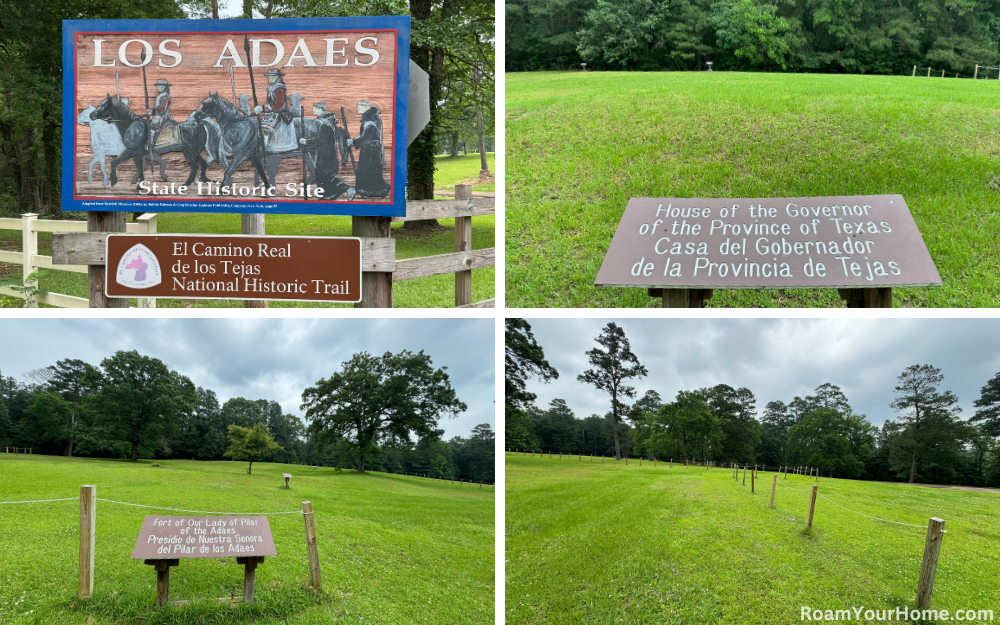
Los Adaes State Historic Site: The Former Capital of Spanish Texas
In the rural rolling hills of western Louisiana, near the tiny town of Robeline, Los Adaes State Historic Site offers a fascinating glimpse into the region’s colonial past.
This little piece of land was once the capital of Spanish Texas. Today, the historic site preserves the remnants of a fort and mission complex and explains their crucial role in the 18th century.
Visitors to Los Adaes can explore its rich history, scenic landscapes, and unique blend of Spanish, French, and Native American influences.
A Brief History of Los Adaes
Los Adaes was established in 1721 by the Spanish as Presidio Nuestra Señora del Pilar de Los Adaes, a fortress built to defend Spain’s claims against French expansion from Louisiana. The site also housed a mission to convert local indigenous groups, particularly the Adaes people, for whom the fort was named. The Spanish had little success in converting the Adaes people. In 1729, Spain made Los Adaes the capital of Spanish Texas, a role it held for over four decades.
Despite its designation as the capital, Los Adaes was a frontier outpost isolated from other Spanish settlements. The garrison struggled with supply shortages and relied heavily on trade with nearby French settlers despite Spanish prohibitions on such dealings. 1773, the Spanish abandoned the fort, and many residents relocated to present-day San Antonio. Soon, however, many of the 500 soldiers and family members quickly left San Antonio and returned to Louisiana, where their descendants live today.
What to Do at Los Adaes State Historic Site
We pulled into the site mid-morning. We were the only car in the parking lot. When my wife and I walked into the Visitor Center, I got the impression that the park ranger was almost surprised to see us. I don’t think the park receives a ton of visitors. That said, I was happy we were there.
The ranger chatted with us for more than 20 minutes. Giving us a great history lesson of the site over a few hundred years and explaining the interpretive exhibits.
The small but informative visitor center features exhibits on Spanish colonial history, indigenous cultures, and the interactions between Spanish, French, and Native American groups. Artifacts discovered at the site, including pottery, weapons, and trade goods, help illustrate daily life at Los Adaes.
Explore the Archaeological Site
After leaving the visitor center, we walked around the site briefly. While little remains of the original structures, Los Adaes State Historic Site still offers a rich historical and natural experience.
Los Adaes is an archaeological site with interpretive signage and exhibits explaining the fort’s layout and significance. A wood and rope parker traced the outline of the original fort. The remnants of earthen fortifications hint at its past as a defensive stronghold.
El Camino Real de los Tejas National Historic Trail
The Los Adaes State Historic Site is an official stop along the El Camino Real de los Tejas National Historic Trail. Its unique history as the forgotten capital of Spanish Texas, combined with its peaceful setting, makes it a little-known gem in Louisiana’s historic landscape.
Plan Your Visit to Los Adaes State Historic Site
Los Adaes State Historic Site is at 6354 Highway 485, Robeline, Louisiana. That’s a little over an hour’s drive southeast of Shreveport and a 3-hour drive from Baton Rouge.
The site is free to enter and typically open Tuesday through Saturday, but check for seasonal changes.
Los Adaes State Historic Site provides a compelling and educational experience for anyone interested in Louisiana’s complex colonial past. Add this lesser-known yet historically significant destination to your travel list!

